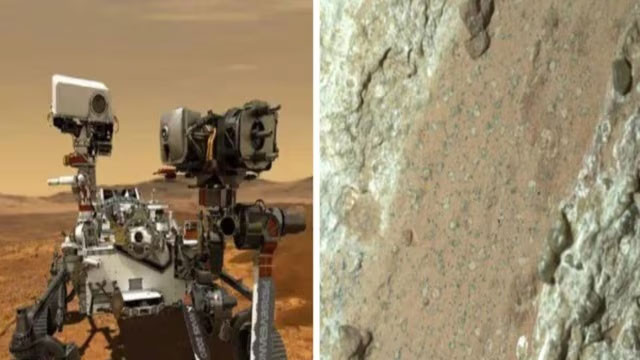Chandrayaan-3 is actively progressing on its mission, and its results are beginning to surface. The spacecraft is steadily unraveling the secrets of the Moon. One of the instruments onboard has sent back new information about the early development of the Moon, suggesting that its surface was once covered by a sea of molten magma.
One of the two instruments on the Chandrayaan-3 rover, the Alpha Particle X-ray Spectrometer (APXS), has provided the first insights into the composition of the lunar soil in the southern latitudes. Analysis of the data collected by APXS revealed that the soil in this newly explored region of the Moon is primarily a mixture of two types of rocks. One of these is composed of magma-derived material, while the other is possibly from the deeper layers of the lunar surface, which could offer further insights into the Moon’s history.
How Did the Moon Cool Down?
It is believed that the Moon formed around 4.2 to 4.3 billion years ago due to a massive collision between Earth and a large asteroid. In its early life, the Moon was thought to be entirely covered by an ocean of magma. Over millions of years, as it cooled down, minerals rich in heavy silicon and magnesium, such as olivine and pyroxene, sank, forming the internal layers of the Moon.
The Vikram lander deployed the rover, which made a ‘soft landing’ near the lunar south pole on August 23, 2023. Chandrayaan-3, consisting of the lander and rover, was launched by ISRO in Bengaluru.
Recorded from 100 Meters Away
This analysis relates to the measurements of lunar soil, which were recorded at several points as the Pragyan rover traversed 100 meters on the surface. Researchers analyzed the data obtained by Pragyan from the lunar south pole and found that the soil is composed of a single type of rock known as Ferroan Anorthosite (FAN).
A Sea of Magma
The study’s authors stated that their findings are consistent with the analysis of samples taken from equatorial and mid-latitude regions. Additionally, the similarity in composition of samples from geographically distant locations supports the lunar magma ocean hypothesis, a widely accepted scenario for the early development of the Moon.
The study also indicated that as the Moon was forming and cooling, low-density FAN floated to the surface while heavier minerals sank to form the ‘mantle,’ which lies beneath the ‘crust,’ the upper part of the surface. The analysis also revealed that Pragyan detected magnesium in the lunar soil




